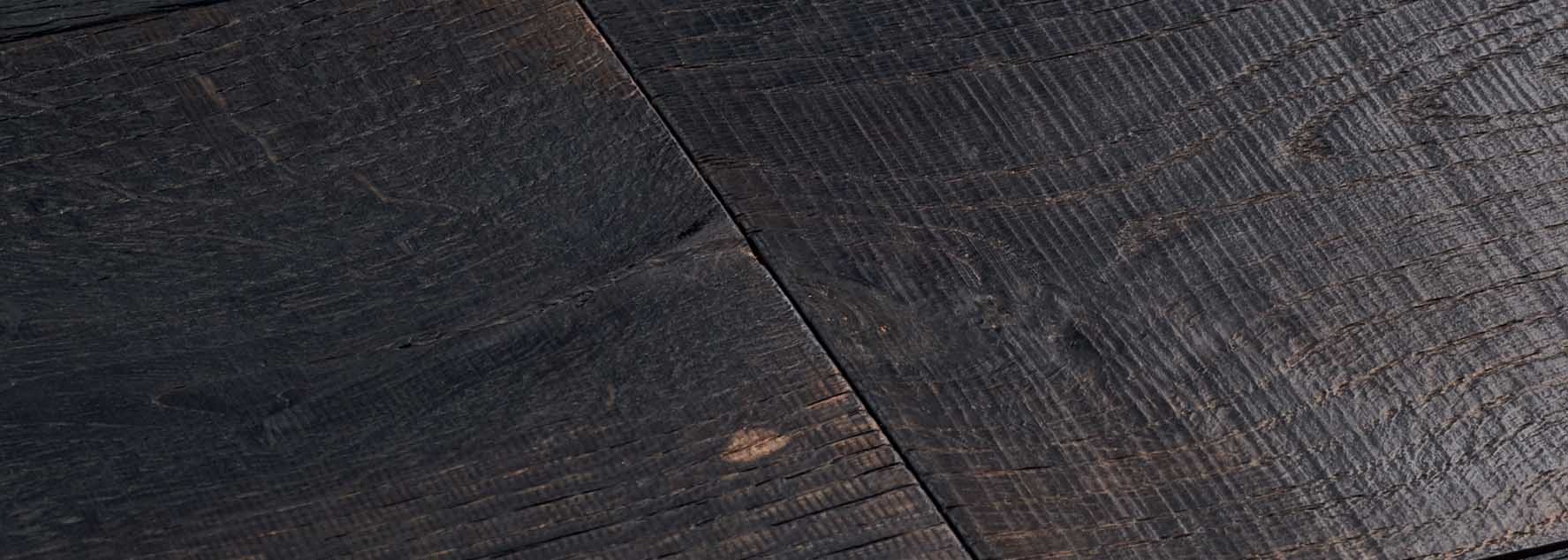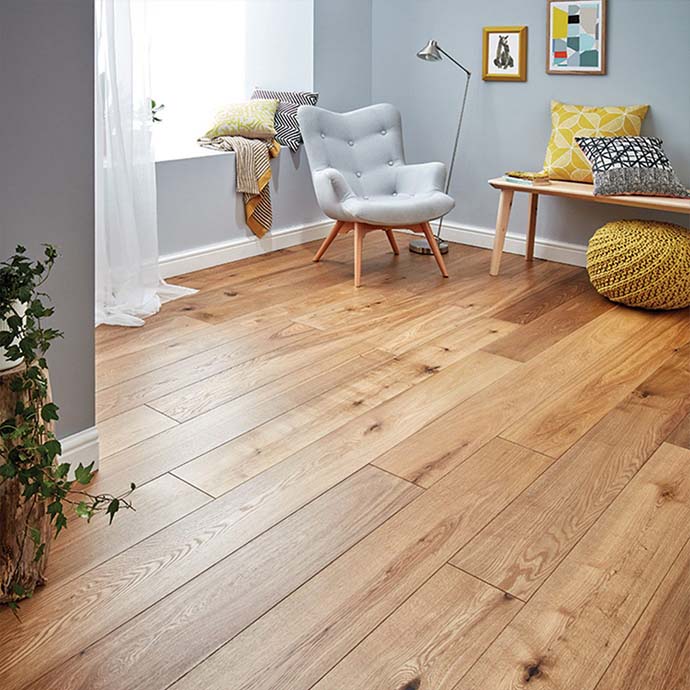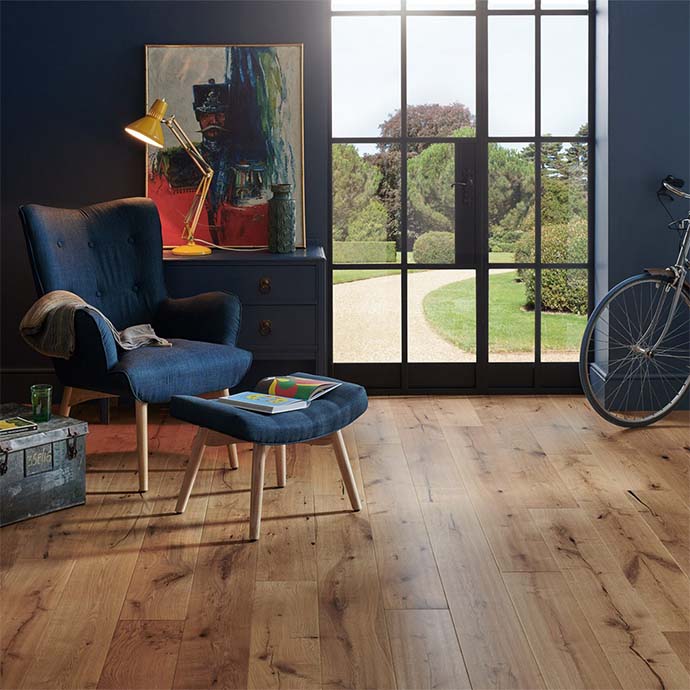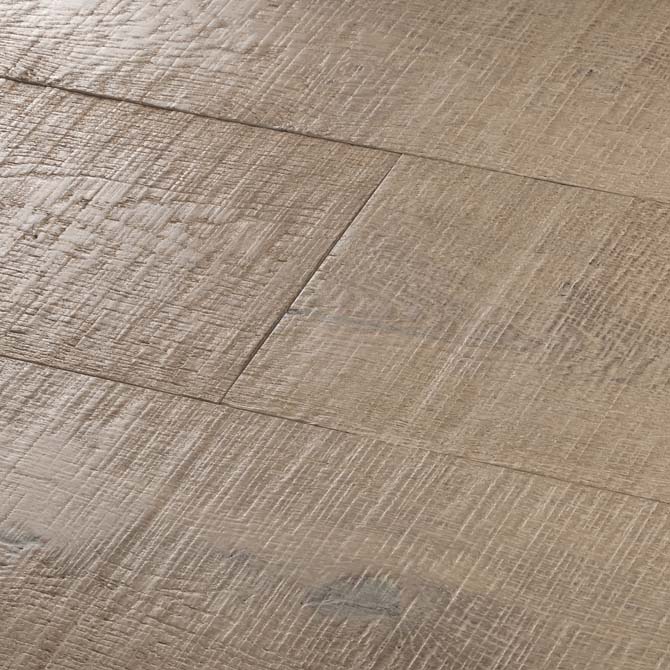What Is Distressing In Wood Floors?

Distressed Oak Flooring CloseUp
Distressed flooring is a particular style of flooring that undergoes certain processes to give it more character and to replicate an old, worn feel. Distressed boards tend to come with a textured finish to enhance the grain of the wood.
There are many processes that make up a ‘distressed’ floor which include:
- Grading
- Smoking
- Hand Scraping
- Planning
- Wire Brushing
- Tumbling
- Ageing
- Sawn/Chatter Marks
- Finishing
Grading
The boards tend to be extra rustic because very little is dismissed from floors with an almost limitless number and size of knots included. Large colour variations, filler, splits, cracks and sapwood are common characteristics of this truly distinctive design. Extra rustic celebrates the striking details of wood as it naturally occurs.
Smoking
Almost half of our wood floors are specially ‘smoked’ to further intensify their naturally beautiful colours. Using this process, we play with the tannins in the timber to enhance or invoke tones, or simply put it makes dark wood darker and light wood lighter.
This process dates back to the turn of the twentieth century, it is thought that the original discovery was made in horse stables. At that time, it was noticed that the beams above the horses were considerably darkened compared to the beams in other parts of the stable and this darkening process was connected to the ammonia in the horses’ urine. Fuming or smoking as a wood treatment process became common place with arts and crafts furniture makers and to this day, is extremely popular.
Fuming or smoking involves putting the oak into an enclosed environment in which ammonia is introduced into the atmosphere. This enclosed environment might be a closed tank or a sealed tent or some form of container into which only a relatively small amount of ammonia is introduced. The effect of the ammonia in the air is that the colour of the wood is changed.




Hand Scraping
Hand scraped refers to the surface texture of wood flooring. The warm rustic bumps and ridge patterns which are manufactured into the wood.
- The term ‘hands scraped’ comes from the original technique used by craftsmen when they would draw a tool across the wood to scrape a plank smooth.
- The woodworker would pull the draw knife toward himself to make an even surface. The process leaves scrape marks that were once typical of wood flooring.
- Today hand scraped wood flooring has become extremely popular. It is available in solid hardwood, engineered hardwood and even in some luxury vinyl tile floor options
Planing
The wood is painstakingly planed by hand to tame its grains and smooth its surface. The boards are given a light pass through a planer to lightly remove some areas of the original face. This allows you to see more of the wood grains, it also makes the boards a little less rough. The amount removed from the face can be adjusted to meet the desired look.
Wire Brushing
This process gives the flooring its textured finish causing the authentic appearance and tactile feel.
Wire brushing involves pulling out soft grains from the wood surface with a rotary wire brush while leaving the hard grains smoother, giving the floor a textured finish. This helps construct a more durable floor that can protect itself against everyday wear and tear. For the builder it helps minimize the appearance of damage caused by tradesman during construction. For the consumer, a textured floor is a lot more forgiving than smooth surfaces to the hazards of everyday life. Kids, rough-housing, and pets can damage a smooth, high-gloss hardwood floor.
Tumbling
Tumbling can be done in a drum on a machine or by hand.
The oak planks are put into a big drum which is kitted out with sharp objects to damage the wood as it tumbles. The tumbling treatment results in a convincing aged effect because it damages not only the surfaces of the planks, but the edges as well, which adds to the overall effect.
When done by hand the edges are scraped to give a gentle rounding down from the face of floor into the bevel to create a pillowed shape.
Ageing
The brushed surface is buffed with a paste, providing a subtle chalky touch to the aged appearance.
Sawn Marks
As the name implies it is done either with a band or similar saw. To achieve the look the saw is lowered on to the wood planks with varying and irregular placement and parallel with the grain, resulting in a slight distressed look that creates light highlights and shadows to provide a beautiful contrast to the natural grain. Sawn mark hardwood floors have a subtle warm texture that give a natural look and slightly worn feel.
Some products are band sawn, that is with saw marks directly up and down on the planks, or circular sawn which gives the wood planks a unique look through its arced markings.

Finishing
Finally, the floors are coated with 5 layers of oil to ensure it’s protected and hard wearing for many years.
